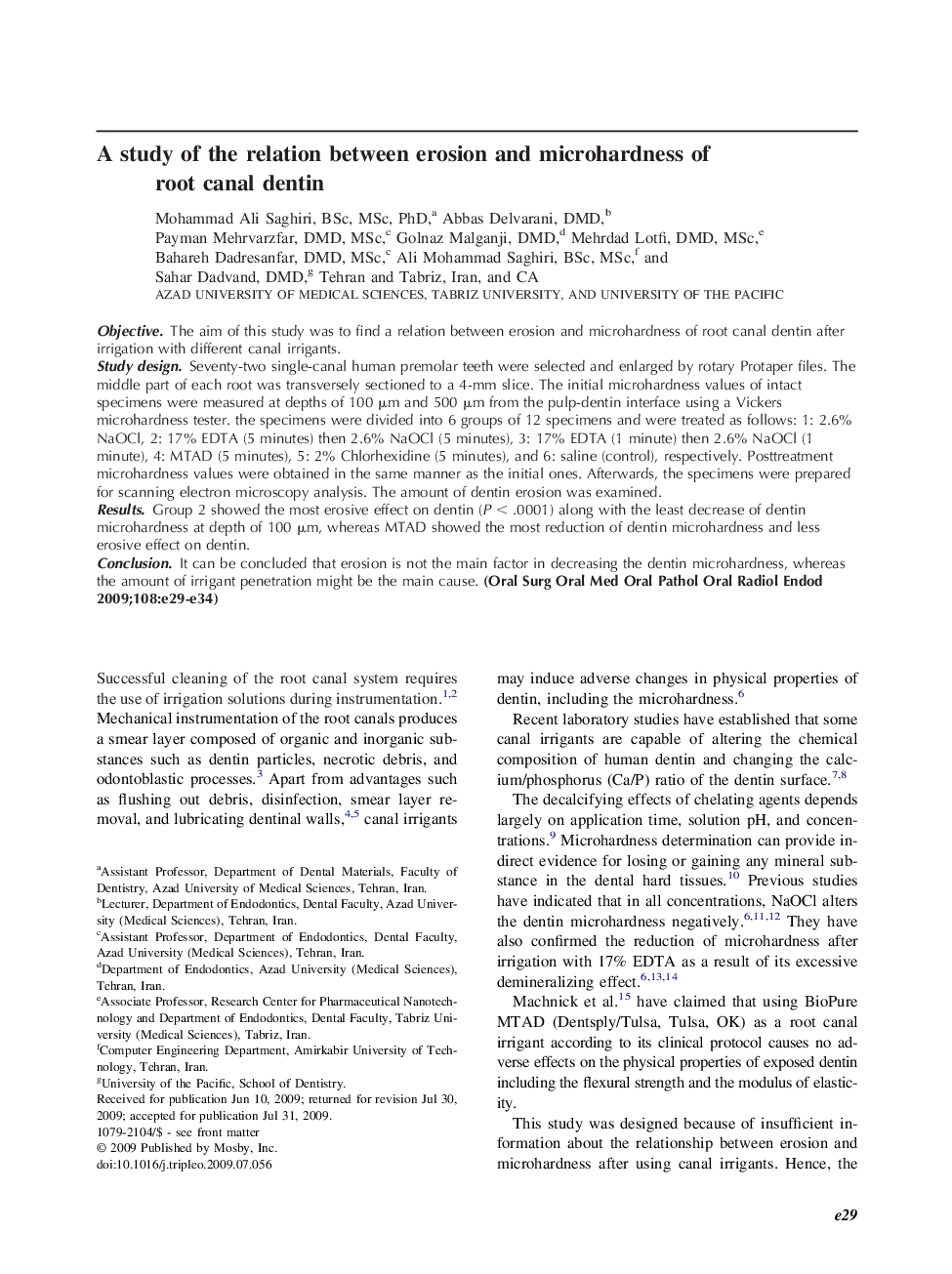| Article ID | Journal | Published Year | Pages | File Type |
|---|---|---|---|---|
| 3167799 | Oral Surgery, Oral Medicine, Oral Pathology, Oral Radiology, and Endodontology | 2009 | 6 Pages |
ObjectiveThe aim of this study was to find a relation between erosion and microhardness of root canal dentin after irrigation with different canal irrigants.Study designSeventy-two single-canal human premolar teeth were selected and enlarged by rotary Protaper files. The middle part of each root was transversely sectioned to a 4-mm slice. The initial microhardness values of intact specimens were measured at depths of 100 μm and 500 μm from the pulp-dentin interface using a Vickers microhardness tester. the specimens were divided into 6 groups of 12 specimens and were treated as follows: 1: 2.6% NaOCl, 2: 17% EDTA (5 minutes) then 2.6% NaOCl (5 minutes), 3: 17% EDTA (1 minute) then 2.6% NaOCl (1 minute), 4: MTAD (5 minutes), 5: 2% Chlorhexidine (5 minutes), and 6: saline (control), respectively. Posttreatment microhardness values were obtained in the same manner as the initial ones. Afterwards, the specimens were prepared for scanning electron microscopy analysis. The amount of dentin erosion was examined.ResultsGroup 2 showed the most erosive effect on dentin (P < .0001) along with the least decrease of dentin microhardness at depth of 100 μm, whereas MTAD showed the most reduction of dentin microhardness and less erosive effect on dentin.ConclusionIt can be concluded that erosion is not the main factor in decreasing the dentin microhardness, whereas the amount of irrigant penetration might be the main cause.
